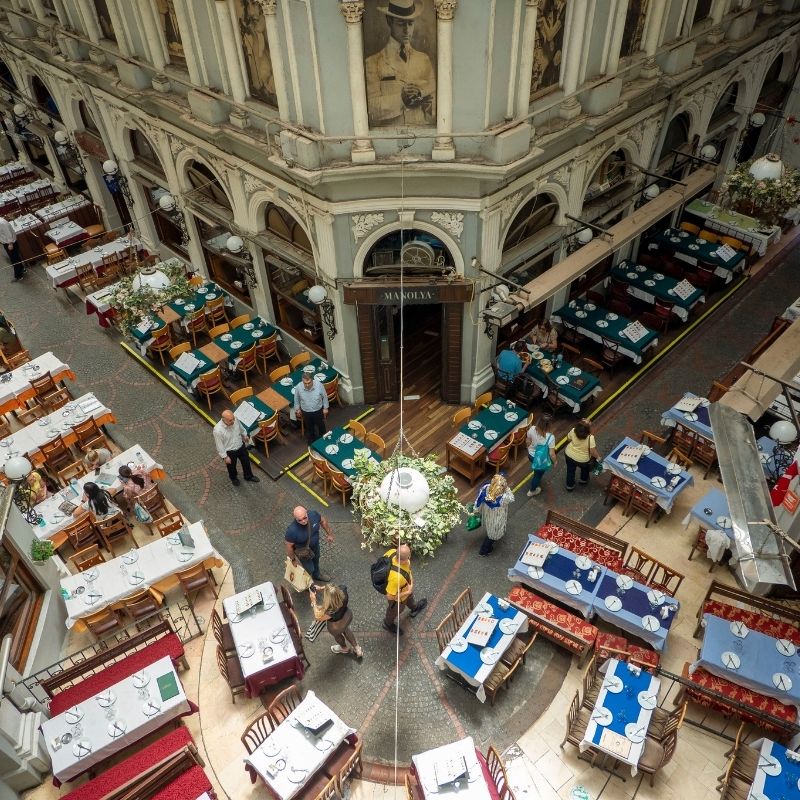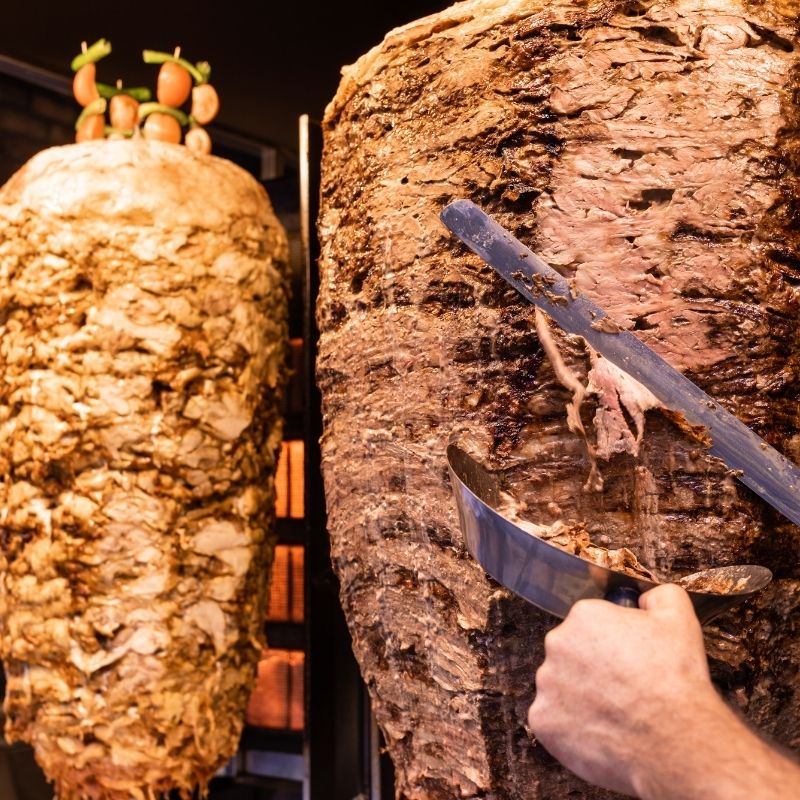
Istanbul Churches Fascinating with Their Architecture
26.08.2024 10:32
The biggest contribution of different beliefs and lifestyles to the city is of course cultural richness. You can see that this richness is reflected in every corner of the city and is shaped in the architectural field together with the Christian faith.
Istanbul Churches Fascinating with Their Architecture See On Map
1. Hagia Triada Church



Built in 1880 by architect Vasilaki Ionnidi, the Hagia Triada Church is one of the largest Greek Orthodox churches in Beyoğlu. The building, which has a Greek cross plan and Gothic-style bell towers, was damaged in the events of 1955 and restored in 2003. The church is open every day of the week and Sunday services are held.
2. St. Pierre Church



St. Pierre Church is located on a street leading down to Bankalar Street on the Golden Horn and was built in 1841. With a history dating back to the 13th century, the church suffered a fire in the 17th and 18th centuries and was subsequently rebuilt by Italian architect Gaspare Trajano Fossati. Despite the plain exterior, the interior is notable for its rich decorations.
3. Sveti Stefan Church (Iron Church)



Stefan Stefan Church is located between Balat and Fener on the Golden Horn and is known as the "Iron Church". Built with the donation of Stefan Bogoridi, the church was rebuilt using iron after the fire in 1898. The artistically important structure has three domes and actively used bells. The church is a symbol of Bulgarian cultural awareness.
4. Crimean Church



The Crimean Church is located on Serdar-i Ekrem Street in Beyoğlu and was built in 1858 by the Ottoman Sultan Abdulmecid in memory of the British soldiers who participated in the Crimean War. Surrounded by high stone walls in the neo-Gothic style, the church was designed by the British architect G. E. Street. Today, it is open to visitors and hosts various events.
5. St. Anthony Church



Located on Istiklal Street in Beyoğlu, the Church of Saint Anthony is the largest Catholic church in Istanbul and has a large congregation. Originally built in the 1230s, the church was moved to its current location after fires and rebuilt in reinforced concrete in the Italian style by Giulio Mongeri in 1906. The church is also known as the place where Pope John XXIII preached.
6. Church of St. Demetrius



The foundations of the Aya Dimitri Church in Kurtuluş, Şişli date back to the Byzantine period. Repairs and additions were made in 1726, 1751-1754 and 1798. The bell tower, built in 1857, was renovated in 1955. The rectangular church is notable for its wood-carved, gold-plated icons and frescoes. The church is the central church of the Kurtuluş Greek Community Foundation and is open for worship every day.
7. Fener Greek Orthodox Patriarchate



The Fener Greek Patriarchate is located in the Fener district of Istanbul, the center of Orthodox Christianity, and is one of the 14 autocephalous churches that make up the Eastern Orthodox Church. The structure was built with a modest architecture due to the post-conquest rules of the Ottoman Empire. It contains the Patriarch's residence, the Church of St. George, holy relics and other important sections. Those who wish to become pilgrims visit the church and are impressed by the objects of high religious importance.
8. Armenian Patriarchate of Istanbul



The Armenian Patriarchate in Kumkapı, which was given to the Armenians by Fatih Sultan Mehmet in 1461, became the center of the Armenian community in the Ottoman Empire. Fatih promised Hovagim in Bursa to be the patriarch and kept this promise after he conquered Istanbul. The Patriarchate has suffered many fires and has been restored many times.
9. Church of Santa Maria



Located on Istiklal Street in Beyoğlu, the Santa Maria Draperis Catholic Church belongs to the Franciscan order and glorifies poverty and simplicity. The church was rebuilt in 1769 and brought to its current form by the architect Guglielmo Semprini in 1904. Built in the neo-classical style, the building attracts attention with its mystical atmosphere.
10. Holy Cross Church



The Surp Haç Church in Üsküdar was built by priest Baladı Abraham in the late 17th century and repaired twice in the 18th century. Built of cut stone in 1880, the church's simple interior draws attention with its elegant chandeliers and historic windows. Also known as the "Salamsız Armenian Church", the building is open to the Armenian community for worship.
11. Kınalıada Surp Krikor Lusavoriç Armenian Church



Surp Krikor Lusavoriç Armenian Church, located on Nar Çiçeği Street in Kınalıada, was opened for worship in 1857 and rebuilt in 1988. The current bell tower and reinforcement works were also carried out in this date. The church has a mihrab, two chapels and provides intensive congregational services during the summer season. Its first priest, Dionisios Çizmeciyan, is buried in the church courtyard.
12. Hagia Irene Church Museum



The Church of Hagia Irene was built by Constantine in the 330s on Roman temples as the first church of Byzantium and means "Holy Peace". Located in the first courtyard of Topkapi Palace, it is the largest Byzantine church not converted into a mosque. The building, which was damaged by earthquakes in the 8th and 9th centuries, was used for different purposes during the Ottoman period. Today, it can only be visited with special permission.
13. Surp Krikor Lusavoriç Armenian Orthodox Church



Surp Krikor Lusavoriç Church in Karaköy is the oldest Armenian church in Istanbul. Built in the 14th century, the church was rebuilt after fires in 1731 and 1799. Two small chapels were added to the main structure in 1888. Rebuilt in the domed style in the 20th century, the church has been open to worship since 1966 and is the only example of classical Armenian architecture.
Leave a Comment



